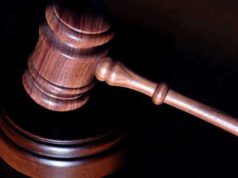Table of Contents
- 0.1 John Adams: Founding Father
- 0.2 Early Life and Education
- 0.3 Career as a Lawyer
- 0.4 Role in the American Revolution
- 0.5 Presidency
- 0.6 Retirement and Legacy
- 0.7 Conclusion
- 1 Founding Father: John Adams
- 2 John Adam’s Early Life
- 3 John Adams’s Political Career
- 4 John Adams as President
- 5 John Adam’s Later Life
- 6 Fun Facts about John Adams

John Adams: Founding Father
John Adams (1735-1826) was one of the founding fathers of the United States of America. He played a crucial role in the American Revolution and was the second President of the United States from 1797 to 1801. Apart from his political career, Adams was also a successful lawyer, writer, and diplomat. This article delves into the life and legacy of John Adams, highlighting important events in his life and contributions to the history of the United States.
Early Life and Education
John Adams was born on October 30, 1735, in Braintree, Massachusetts, now known as Quincy. He was the eldest son of John Adams Sr., a farmer and a Congregationalist deacon, and Susanna Boylston, the daughter of a wealthy medical doctor. Adams grew up in a Puritan household and was taught by his father to value education and hard work. Despite his parent’s religious background, Adams did not take an interest in theology and instead pursued a legal career.
Adams attended Harvard College in 1751, where he studied mathematics, Latin, Greek, and philosophy. He graduated in 1755, ranking in the top five percent of his class. After completing his bachelor’s degree, Adams started working as a schoolteacher in Worcester, Massachusetts, while he prepared for the bar exam. In 1758, he passed the exam and was admitted to the Massachusetts bar, the beginning of his legal career.
Career as a Lawyer
John Adams’s legal career was quite successful, as he had an excellent reputation as a skilled and honest lawyer. In 1761, he became involved in one of his most significant cases, known as the Writs of Assistance Case. The case involved four Massachusetts merchants who had imported goods without paying the required duties to the British government. The government argued that the merchants had used smuggled goods, and therefore, the customs officials should be granted Writs of Assistance, or general search warrants, to search for illegal goods in their warehouses and homes.
Adams argued that the Writs of Assistance violated colonists’ rights to privacy and protection against unreasonable searches and seizures. Although Adams lost the case, his eloquent argument earned him a reputation as a defender of liberty. His involvement in the Writs of Assistance Case also marked the beginning of his opposition to British authority, a cause he would later champion during the American Revolution.
Role in the American Revolution
John Adams’s political career began during the American Revolution, where he played an important role in the fight for independence. In 1765, the Stamp Act was passed, which required colonists to buy special stamps for printed items. Adams was a vocal opponent of the Stamp Act and other British measures intended to assert control over the colonies. Beginning in 1770, Adams defended British soldiers accused of murder during the Boston Massacre, arguing that the colonists were overreacting and that the British soldiers were justified in their actions. Although this was unpopular among many colonists, Adams believed in the rule of law and that everyone deserved a fair trial.
In the years leading up to the Revolution, Adams became heavily involved in politics. He was a delegate to the First and Second Continental Congresses and played a crucial role in drafting the Declaration of Independence. Adams opposed slavery and was one of the few founding fathers to support women’s rights. He was also one of the architects of the United States government, drafting the Massachusetts state constitution, which served as a model for the U.S. Constitution.
John Adams became the first American ambassador to Britain in 1785, where he tried to mend the strained relations between the two countries after the Revolutionary War. Although he did not succeed in his mission, he gained valuable diplomatic experience that would serve him well in his future political career.
Presidency
John Adams became the second President of the United States in 1797, serving one term from 1797 to 1801. Adams’s presidency was marked by the threat of war against France, tensions with his own political party, and his push for a strong federal government.
During his presidency, Adams signed the Alien and Sedition Acts, which made it more difficult for immigrants to become citizens and criminalized criticism of the federal government. These acts were widely seen as a violation of civil liberties and sparked opposition among the public, as well as within Adams’ own party.
Adams’s presidency was also marked by tensions with his Vice President, Thomas Jefferson, who was his political rival and ideological opposite. The two men had a contentious relationship and disagreed on many issues, including the role of the federal government and foreign policy. Adams’s presidency ultimately ended when he lost his bid for re-election to Thomas Jefferson in 1800, in what became known as the “Revolution of 1800.”
Retirement and Legacy
After his presidency, John Adams retired to his farm in Quincy, Massachusetts. He continued to write and correspond with other prominent figures in American politics, including his former rival Thomas Jefferson. The two men reconciled their differences and became close friends later in life. In fact, they both died on the same day, July 4, 1826, the 50th anniversary of the adoption of the Declaration of Independence.
John Adams’s legacy is best characterized by his contributions to the founding of the United States and his commitment to liberty and democracy. He played a critical role in drafting the Declaration of Independence, was a staunch defender of civil liberties, and was among the first to recognize the importance of a strong federal government. His writings, including his letters, speeches, and essays, are also highly regarded and provide valuable insights into the thinking of the founding fathers.
Conclusion
John Adams was a highly accomplished man who played a crucial role in the founding of the United States of America. He was a successful lawyer, a key figure in the American Revolution, and the second President of the United States. Adams was a man of strong convictions and was willing to defend those beliefs, even when it was unpopular. Although his presidency had its challenges, Adams’s contributions to the founding of the United States, his commitment to civil liberties, and his advocacy for a strong federal government make him an important figure in American history.
Founding Father: John Adams
John Adams was the first Second President and the first Vice President of the United States. His son, John Quincy Adams, was the sixth President of the United States.
John Adam’s Early Life
Adams was born in October 30, 1735 in Quincy, Massachusetts. He went to Harvard College and graduated in 1755. Afterwards, he studied law with Rufus Putnam, and also taught at Worcester. He became a lawyer in 1758.
John Adams would often write about different events in his world. Some of his early writings talked about different arguments the court, while his later writings were his memoirs, thoughts, and arguments that were based on his early writings.
John Adams’s Political Career
John Adams’ personality was the opposite of the first President, George Washington. Washington was very outgoing and thought of his community. However, John Adams was very was known to be reckless, intense, and very passionate.
John Adams’ career in political started when he became the leader of the Massachusetts Whigs. In 1765, John Adams wrote a series articles that were very controversial about the struggles between the colonists and authority.
In 1768, John Adams moved to Boston and two years later, he helped defend many British soldiers that had been arrested after the Boston Massacre. John Adams helped set them free by defending them very well. Because of this, he was recognized and was elected into the House of Representatives of Massachusetts.
Afterwards, John Adams became a member of the Continental Congress between 1774 and 1778. In June 1775, John Adams supported a nomination of George Washington as commander-in-chief because he wanted to support the union of the American colonies.
He influenced Congress with his ideas to separate the American colonies from Great Britain’s rule. He also supported a resolution that said the colonies should be independent states, which resulted in him being a part of the committee that drafted the Declaration of Independence.
John Adams as President
In 1796, John Adams was elected President since George Washington did not want to run for a third term. During his four year term, he passed some acts that later made everyone look down on the Federalist Party. He became alienated by his own party and his staff would often look to Alexander Hamilton for advice instead. He ran for President again in 1800, but was defeated by Thomas Jefferson. After his loss, he retired from politics.
John Adam’s Later Life
John Adams retired and moved back to his farm in Quincy, Massachusetts. Here he would often write long letters to Thomas Jefferson. John Adams died on July 4, 1826, which was the 50th anniversary of the signing and adoption of the Declaration of Independence. He died at home and his last words were “Thomas Jefferson survives.” The strange part about this was that Thomas Jefferson had also passed the same day, but only a few hours earlier.
Fun Facts about John Adams
•John Adams had a pet horse named Cleopatra.
•John Adams’ wife, Abigail Smith, was actually his third cousin.
•John Adams liked to farm and hunt.






















